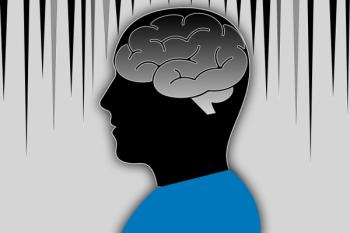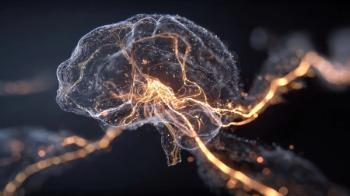
- Vol 38, Issue 1
- Volume 38
- Issue 01
Microglial Involvement With Psychiatric Diseases
This CME article briefly outlines the role that microglia play in neuropsychiatric disorders.
CATEGORY 1 CME
Premiere Date: January 20, 2021
Expiration Date: July 20, 2022
This activity offers CE credits for:
1. Physicians (CME)
2. Other
All other clinicians either will receive a CME Attendance Certificate or may choose any of the types of CE credit being offered.
ACTIVITY GOAL
The goal of this activity is to learn about the impact of microglial reactivity on mental health and detect it in patients.
LEARNING OBJECTIVES
After engaging with the content of this CME activity, you should be better prepared to:
1. Delineate at least 8 physiological functions of microglia.
2. Discuss methodology to analyze microglia in psychiatric conditions.
3. Outline the current understanding of how microglia are altered in various psychiatric conditions.
TARGET AUDIENCE
This continuing medical education (CME) activity is intended for psychiatrists, psychologists, primary care physicians, physician assistants, nurse practitioners, and other health care professionals who seek to improve their care for patients with mental health disorders.
ACCREDITATION/CREDIT DESIGNATION/FINANCIAL SUPPORT
This activity has been planned and implemented in accordance with the accreditation requirements and policies of the Accreditation Council for Continuing Medical Education (ACCME) through the joint providership
Physicians’ Education Resource®, LLC designates this enduring material for a maximum of 1.5 AMA PRA Category 1 Credits™. Physicians should claim only the credit commensurate with the extent of their participation in the activity.
This activity is funded entirely by
OFF-LABEL DISCLOSURE/DISCLAIMER
This CME activity may or may not discuss investigational, unapproved, or off-label use of drugs. Participants are advised to consult prescribing information for any products discussed. The information provided in this CME activity is for continuing medical education purposes only and is not meant to substitute for the independent clinical judgment of a physician relative to diagnostic or treatment options for a specific patient’s medical condition.
The opinions expressed in the content are solely those of the individual faculty members and do not reflect those of Physicians’ Education Resource®, LLC.
FACULTY, STAFF, AND PLANNERS’ DISCLOSURES
The article’s authors, Carsten Culmsee, PhD (external peer reviewer), and the staff members of Physicians’ Education Resource®, LLC and Psychiatric TimesTM have no relevant financial relationships with commercial interests.
For content-related questions email us at
HOW TO CLAIM CREDIT
Once you have read the article, please use the following URL to evaluate and request credit
A complex relationship exists between inflammation and neuropsychiatric disorders, particularly those related to psychological stress exposure, such as anxiety disorders and major depressive disorder. For example, patients with chronic inflammatory conditions (eg, asthma or arthritis) show a high degree of comorbidity for these and
Microglia
Posing as the orchestrators of the defense system in the brain, microglia comprise approximately 10% of its cellular population.4 Unlike the other brain glial cells, astrocytes and oligodendrocytes, microglia originate from the embryonic yolk sac.4 They migrate to the brain early in development (embryonic day 9.0 in mice, corresponding to 4 to 5 weeks of human gestation) and
Microglia act as the brain’s primary responders to homeostatic alterations, including stress-induced changes in neuronal activity and synaptic plasticity. Microglia also respond to more global and systemic disturbances associated with altered sleep, inflammation in the central and peripheral nervous system, and dietary imbalance.5 Exposure to immunological (eg, viral and bacterial infection), physiological (eg, trauma, hypoxia-ischemia, disease, or malnutrition), or psychosocial (eg, low socio-economic status or substance abuse) stressors is associated with altered microglial function and an increased risk of developing a wide range of psychiatric conditions.4,5 The vulnerability to these environmental stressors is exacerbated during prenatal, perinatal, and early postnatal development, which are the periods of life associated with the onset of neurodevelopmental disorders.4,5 Stress in adolescence or adulthood can contribute to anxiety or depression and potentiate the onset of age-related cognitive decline and neurodegenerative diseases, all of which have an affective component and involve microglial dysfunction.5
Microglia appear to play a contributing role in the onset and progression of various neuropsychiatric disorders throughout life through abnormal homeostasis maintenance leading to neurodegeneration and synaptic loss.4-6 These are outwardly reflected as cognitive impairments or behavioral alterations, 2 common symptoms of psychological disorders.4 In both health and disease, microglia exert their effector functions through a variety of mechanisms (
In response to homeostatic challenges, microglia can alter their phenotype and function, thereby adopting a reactive state.4-6 Reactive microglia may change their morphology to a hyperramified or amoeboid shape, upregulate danger associated molecular pattern receptors on their surface and release increased amounts of cytokines and/or other inflammatory factors.5,6 Homeostatic challenges are able to prime microglia to intensify phagocytosis and respond more robustly to a subsequent alteration.5 It was previously thought that reactive microglia exist in 2 states: M1, which resembles a proinflammatory, pathological, and classical reactive phenotype; and M2, which represents an anti-inflammatory, restorative/reparative phenotype.7 M1-like cells are stimulated by interferon-g and lipopolysaccharide (LPS) or tumor necrosis factor alpha and express mRNA for inducible nitric oxide synthase and CD86 (a costimulatory molecule).7 These cells have upregulated phagocytic activity, secrete pro-inflammatory cytokines (eg, interleukin [IL]-1b, IL-12), and generate reactive oxygen species (ROS).7 M1-like cell functions, which include increased motility, ROS and other proinflammatory mediator production, and membrane turnover, require the following metabolic activities: glycolysis, pentose phosphate pathway activity, nicotinamide adenine dinucleotide phosphate production, and fatty acid synthesis.7 M2-like cells, on the other hand, are stimulated by IL-4 or IL-13 and express mRNA for arginase and CD206.7 These cells secrete anti-inflammatory cytokines (eg, IL-10) and growth factors as well as stimulate stem cell production and differentiation.7 M2-like cells need continual activation to increase the transcription of repair genes as well as produce growth factors, which requires energy production utilizing oxidative phosphorylation (and amino acid/fatty acid oxidation).7 It is important to note, however, that these classifications, which arose from in vitro cell culture studies, often failed to translate to in vivo conditions.7 The field thus rejected them.7,8 Instead, microglia are now known to adopt various phenotypes, in which they can perform specialized functions, highlighting an important need for more nuanced tools to investigate microglial function.5,9,10 Microglia are heterogeneous: they comprise different subtypes that can be differentially recruited with each adopting different phenotypes depending on the context of health or disease.4,5,10
To assess the role of microglia in humans, brain imaging techniques have been developed (
Neuropsychiatric Disorders
AUTISM SPECTRUM DISORDERS (ASD). Abnormalities in social interactions and communication, repetitive behavioral patterns, or sensor and emotional processing impairments—core symptoms of ASD—were repeatedly associated with dysfunctions in the neuroimmune crosstalk.16 People with ASD reportedly exhibit alterations of synaptic density and excitatory versus inhibitory tone, accompanied by a decrease in the expression of synaptic plasticity-related genes and an increase of TSPO signals across multiple brain regions, most notably the cerebral cortex, cerebellum, hippocampus, and amygdala.5 Results from preclinical studies provided further information on the synaptic changes, their association with impaired neuronal migration, and circuitry formation; and pointed to the role of mutations in microglial genes in ASD pathology.5,16 Among these is the gene coding for fractalkine receptor (CX3CR1), which mediates neuronal communication with microglia and is important for their response to stress.16 According to the 2-hit hypothesis of neurodevelopmental disorders, developmental activation of the immune system may act as a first hit, causing microglial priming, which in vulnerable individuals may result in increased sensitivity as well as inflammatory and phagocytic response to latter stimuli.5 Altered pruning activities of primed microglia could result in inappropriate brain circuit wiring, giving rise to ASD or other neurodevelopmental disorders.5 As an animal model of prenatal infection, maternal immune activation (MIA) is frequently used to study the relationship of inflammation with disorders of a developmental origin.5,16
GILLES DE LA TOURETTE SYNDROME (TS). Few studies have focused on the microglia/inflammatory aspect of TS. Alterations of cortico-striato-thalamic pathways leading to aberrant inhibitory control of these circuits were proposed to underlie symptoms of motor disorders, including TS.17 These changes may result from inadequate neuronal support or uncontrolled microglial pruning activities.17 Clinical studies using TSPO neuroimaging or transcriptomics have supported the link between up-regulated microglial activity, expression of inflammatory markers and neuroinflammation in TS.17 These changes were observed in key brain areas such as the basal ganglia, particularly the striatum, of patients across different ages.17 Moreover, a new animal model of TS (knock-out [KO] of the histidine decarboxylase [Hdc] gene—a key enzyme in the histamine pathway) revealed striatal and hippocampal differences in microglial responses.17 Specifically, microglia of Hdc-KO mice basally displayed a reactive profile associated with reduced ramification and decreased expression of insulin-like growth factor, which is involved in neuronal support and survival.17 On the contrary, LPS challenge resulted in exaggerated microglial inflammatory response in this model.17
OBSESSIVE COMPULSIVE DISORDER (OCD) AND RELATED DISORDERS. OCD and related disorders are presumed to result from abnormal wiring in pathways similar to those of TS. Therefore, they share a high degree of comorbidity.17 Review of available data indicates peripheral inflammation and neuroinflammation in patients with OCD, of whom approximately 40% to 50% also suffer from an autoimmune disease of metabolic or cardiovascular character.18 Heightened TSPO binding in orbitofrontal cortex implies increased microglial/inflammatory activity in patients with OCD compared with healthy controls.18 A preclinical model in which there is a selective ablation of a microglial subpopulation from the homeobox protein 8 lineage produced an OCD-like behavioral phenotype.18
ANXIETY, DEPRESSIVE, AND TRAUMA-RELATED DISORDERS. There is a large degree of overlap in the preclinical models for aspects of these disorders. Many researchers use chronic stress paradigms (social stressors such as intruder, social defeat, or subpar housing), fear learning, threat appraisal paradigms, or reward learning and processing to study precipitating factors or symptoms common across multiple disorders.6 There are numerous reports in animal models of increased microglial density and activity following exposure to chronic stressors. The reports noted morphological changes; increased phagocytosis, notably involved in neuronal circuit remodeling; and secretion of primarily proinflammatory factors.6 These effects, along with associated pathological events (eg, monocyte trafficking across the blood brain barrier), are necessary for driving chronic-stress induced anxiety-like behavior, anhedonia, or learned helplessness.6
Although there is a paucity of postmortem studies in humans, there is evidence of IBA1+ cells as well as an upregulation of human leukocyte antigen-D related (HLA-DR; a marker associated with antigen presentation during autoimmunity and infection) in the anterior cingulate cortex of patients with severe mood disorders (including major depressive disorder and bipolar disorder), particularly those who died by suicide.14 In vivo analysis shows mixed evidence regarding TSPO binding in patients with mood disorders, depending on the study and radiotracer.11 Although investigators observed no difference in TSPO binding in patients with mild to moderate depression, using a different TSPO tracer in a sample of patients with severe depression showed increased TSPO binding in the striatum, hippocampus, and prefrontal cortex,11 which related to symptom severity.
SCHIZOPHRENIA. Both neuroimaging and postmortem studies highlight alterations of microglia in schizophrenia.20 Postmortem human samples showed increased numbers of IBA1+ cells, especially with an ameboid morphology throughout the brain. They also showed an elevation of pro-inflammatory parameters.20 TSPO binding was increased in grey matter across the frontal and temporal lobes of patients with schizophrenia, as well as of those at high risk of developing the disorder.20 This increase in number and pro-inflammatory activity may be driving an increase in synaptic pruning, which is observed in this disorder.21
Results from studies in humans showed upregulation of certain cytokines during
BIPOLAR DISORDER. Evidence that microglia are altered in bipolar disorder comes from PET imaging and post-mortem studies. PET imaging studies showed an increase in TSPO binding in the right hippocampus.24 However, results of postmortem studies are mixed. A recent systematic review24 highlighted very few changes. However, there were few studies with decreased levels of HLA-DR, CD68, CD11b, and quinolinic acid (a N-methyl-D-aspartate receptor agonist, which can induce neurotoxicity) in IBA1+ cells throughout the brain, including the dorsal raphe nucleus, frontal cortex, anterior cingulate cortex, and hippocampus.24 Other evidence shows microglial reactivity in patients with bipolar disorder who died by suicide, but this may be broadly true across diagnoses.14,24 Thus, there is currently no consensus as to the role that microglia play in bipolar disorder. It may be that the reduction in reactivity indicates an impairment of synaptic pruning and refinement, as there is no good evidence that bipolar disorder results in a loss of neuropil. Adequate animal models for the mania-associated symptoms of bipolar disorder are lacking, as ae models for depressive symptoms, as previously discussed.
SUBSTANCE USE DISORDERS. A
Concluding Thoughts
This article briefly outlines the role that microglia play in neuropsychiatric disorders. For example, there was little discussion of the mediators of these effects (eg, cytokines, neuroendocrine signals) or the influence of infiltrating immune cells (some of which closely resemble microglia in terms of morphology, molecular expression, and functions).
Although not discussed herein, how treatments for these disorders may alter microglia deserves discussion. There is some evidence that antidepressants such as selective serotonin reuptake inhibitors reduce microglial reactivity (eg, increased IBA1+ staining) and neuroimmune parameters in rodent models.19 There are
Another interesting area of growing research is the relationship between the gut-brain axis, microglia, and neuropsychiatric disorders. Particularly at the preclinical level, investigators are looking at the role of the microbiota, the effects of pre- and post-biotics and diet on microglia, and neuropsychiatric disorders.28 Changes to the gut-brain axis and microbiota can alter levels of neurotransmitters, short-chain fatty acids, and inflammatory signals that can affect the brain (including microglia), which can lead to changes in behavior.28 This field is still growing, although there is current interest in using pre- and post-biotics as potential therapeutics in neuropsychiatric disorders.
Although this review was separated into disorder types, there are changes in brain regions or experiences that contribute to similar symptoms across disorders. Thus, using a
Better and more specific tool development for human imaging studies is crucial, so that we are better able to understand brain alterations that may be driving pathogenesis. Recent advances in the field include new radiotracers that might provide functional insight into how microglia are behaving in different psychiatric conditions, for instance targeting the fractalkine or purinergic systems. The upcoming years are sure to yield new exciting research that will hopefully lead to better targeted and more efficient treatments.
Dr Vecchiarelli is a postdoctoral fellow at the Division of Medical Sciences in the University of Victoria. Ms Šimončičová is a doctoral student at the University of Victoria. Dr Tremblay is an associate professor, Canada Research Chair (Tier II) of Neurobiology of Aging and Cognition, Division of Medical Sciences in the University of Victoria.
ACKNOWLEDGMENTS
We acknowledge that the University of Victoria stands on the territory of the Lekwungen peoples and that the Songhees, Esquimalt and WSÁNEĆ peoples have relationships to this land; and that Université Laval stands on the unceded land of the Huron-Wendat peoples.
We thank J. Savage, PhD; F. González-Ibáñez, MSc; and MK St-Pierre, MSc for confocal and electron microscopy images.
Dr Tremblay is a Canada Research Chair (Tier II) in Neurobiology of Aging and Cognition. Ms Šimončičová was supported by a National Scholarship Programme of Slovak Republic provided by SAIA. Dr Vecchiarelli was supported by fellowships from the Canadian Institutes of Health Research (CIHR) and the Michael Smith Foundation for Health Research. This work was funded by a CIHR Foundation Grant awarded to Dr Tremblay.
REFERENCES
1. Leonard BE. Impact of inflammation on neurotransmitter changes in major depression: an insight into the action of antidepressants. Prog Neuropsychopharmacol Biol Psychiatry. 2014;48:261-7.
2. Dantzer R, O’Connor JC, Freund GG, et al. From inflammation to sickness and depression: when the immune system subjugates the brain. Nat Rev Neurosci. 2008;9(1):46-56.
3. Harrison NA, Brydon L, Walker C, et al.
4. Salter MW, Stevens B. Microglia emerge as central players in brain disease. Nat Med. 2017;23(9):1018-1027.
5. Tay TL, Béchade C, D’Andrea I, et al. Microglia gone rogue: impacts on psychiatric disorders across the lifespan. Front Mol Neurosci. 2018;10:421.
6. Wohleb ES, Delpech JC. Dynamic cross-talk between microglia and peripheral monocytes underlies stress-induced neuroinflammation and behavioral consequences. Prog Neuropsychopharmacol Biol Psychiatry. 2017;79(Pt A):40-48.
7. Devanney NA, Stewart AN, Gensel JC. Microglia and macrophage metabolism in CNS injury and disease: The role of immunometabolism in neurodegeneration and neurotrauma. Exp Neurol. 2020;329:113310.
8. Ransohoff RM. A polarizing question: do M1 and M2 microglia exist? Nat Neurosci. 2016;19(8):987-91.
9. Savage JC, St-Pierre MK, Hui CW, Tremblay ME. Microglial ultrastructure in the hippocampus of a lipopolysaccharide-induced sickness mouse model. Front Neurosci. 2019;13:1340.
10. Stratoulias V, Venero JL, Tremblay MÈ, Joseph B. Microglial subtypes: diversity within the microglial community. EMBO J. 2019;38(17):e101997.
11. Felger JC. Imaging the role of inflammation in mood and anxiety-related disorders. Curr Neuropharmacol. 2018;16(5):533-558.
12. Pannell M, Economopoulos V, Wilson TC, et al. Imaging of translocator protein upregulation is selective for pro-inflammatory polarized astrocytes and microglia. Glia. 2020;68(2):280-297.
13. Woodcock EA, Hillmer AT, Mason GF, Cosgrove KP.
14. Mechawar N, Savitz J. Neuropathology of mood disorders: do we see the stigmata of inflammation? Transl Psychiatry. 2016;6(11):e946.
15. Savage JC, Picard K, González-Ibáñez F, Tremblay MÈ. A brief history of microglial ultrastructure: distinctive features, phenotypes, and functions discovered over the past 60 years by electron microscopy. Front Immunol. 2018;9:803.
16. Prata J, Machado AS, von Doellinger O, et al. The contribution of inflammation to autism spectrum disorders: recent clinical evidence. Methods Mol Biol. 2019;2011:493-510.
17. Frick L, Pittenger C. Microglial dysregulation in OCD, Tourette Syndrome, and PANDAS. J Immunol Res. 2016;2016:8606057.
18. Gerentes M, Pelissolo A, Rajagopal K, et al. Obsessive-compulsive disorder: autoimmunity and neuroinflammation. Curr Psychiatry Rep. 2019;21(8):78.
19. Sild M, Ruthazer ES, Booij L.
20. Mongan D, Ramesar M, Föcking M, et al. Role of inflammation in the pathogenesis of schizophrenia: a review of the evidence, proposed mechanisms and implications for treatment. Early Interv Psychiatry. 2020;14(4):385-397.
21. Sellgren CM, Gracias J, Watmuff B, et al. Increased synapse elimination by microglia in schizophrenia patient-derived models of synaptic pruning. Nat Neurosci. 2019;22(3):374-385.
22. Allswede DM, Cannon TD.
23. Sekar A, Bialas AR, de Rivera H, et al. Schizophrenia risk from complex variation of complement component 4. Nature. 2016;530(7589):177-83.
24. Giridharan VV, Sayana P, Pinjari OF, et al. Postmortem evidence of brain inflammatory markers in bipolar disorder: a systematic review. Mol Psychiatry. 2020;25(1):94-113.
25. Cullen CL, Young KM. How Does Transcranial Magnetic Stimulation Influence Glial Cells in the Central Nervous System? Front Neural Circuits. 2016;10:26.
26. Li H, Sagar AP, Kéri S. Translocator protein (18kDa TSPO) binding, a marker of microglia, is reduced in major depression during cognitive-behavioral therapy. Prog Neuropsychopharmacol Biol Psychiatry. 2018;83:1-7.
27. Radtke FA, Chapman G, Hall J, Syed YA. Modulating neuroinflammation to treat neuropsychiatric disorders. Biomed Res Int. 2017;2017:5071786.
28. Cryan JF, O’Riordan KJ, Cowan CSM, et al. The microbiota-gut-brain axis. Physiol Rev. 2019;99(4):1877-2013. ❒
Articles in this issue
almost 5 years ago
The Field as a Master Class in Interviewingalmost 5 years ago
CAHOOTS: A Model for Prehospital Mental Health Crisis Interventionalmost 5 years ago
The Promise and Potential of Emergency Psychiatryalmost 5 years ago
Improving Care in Teens With Opioid Use Disorderalmost 5 years ago
Benzodiazepine Use and the Risk of Dementiaalmost 5 years ago
My Patient Lost Their Job…Now What?almost 5 years ago
Two Hundred ThousandNewsletter
Receive trusted psychiatric news, expert analysis, and clinical insights — subscribe today to support your practice and your patients.

















